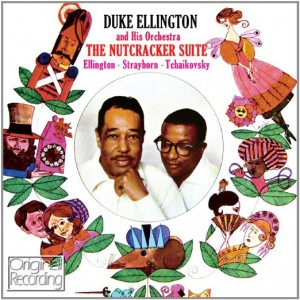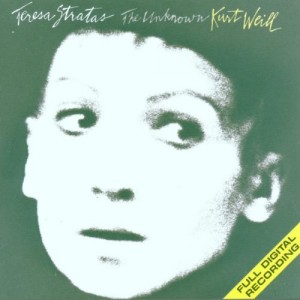New CDs for October 2016
Ballet Music
Atlantic Sinfonietta- Music For Martha Graham
Atlantic Sinfonietta- More Music For Martha Graham
Atlantic Sinfonietta – Music For Martha Graham III
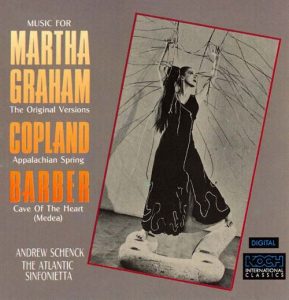
Jazz
Joey Alexander – Countdown
Seamus Blake – Bellwether
John Daversa- Kaleidoscope Eyes: The Music of the Beatles
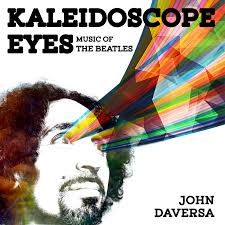
Sara Gazarek and Josh Nelson – Dream in the Blue
The Fred Hersch Trio – Sunday Night at the Vanguard
Marquis Hill – The Way We Play
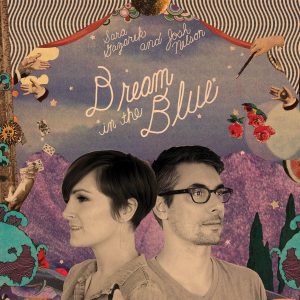
Charlie Hunter – Everybody Has A Plan Until They Get Punched In The Mouth
Charlie Hunter Trio – Let The Bells Ring On
Steve Lehman – Se´le´be´yone
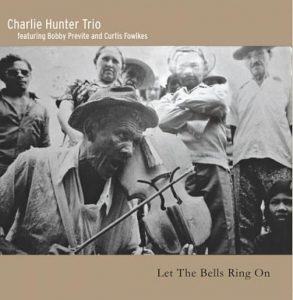
Steve Lehman Octet – Mise en abime
Lage Lund – Idlewild
Jeff Parker – The New Breed
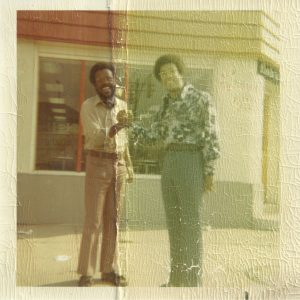
Joshua Redman and Brad Mehldau – Nearness
Catherine Russell – Harlem On My Mind
Dayna Stephens featuring Walter Smith III – Reminiscent

Scott Tixier – Cosmic Adventure
Steve Turre – Colors for the Masters
Ben Wendel – What We Bring
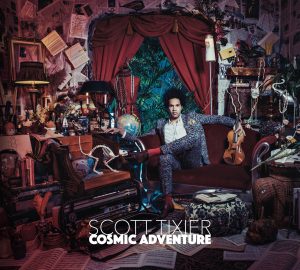
Opera
Antonio Carlos Gomes – Il Guarany
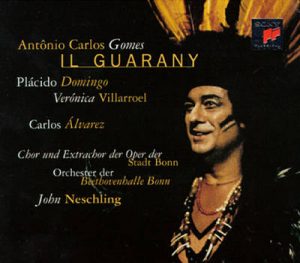
Classical
Leopold Stokowski – The Columbia Stereo Recordings

Pop/Rock/R&B
Babes in Toyland – Spanking Machine
Bikini Kill – The First Two Records
Huggy Bear – Weaponry Listens To Love

Kate Nash – Girl Talk
Sleater-Kinney – Sleater-Kinney
Sleater-Kinney – Dig Me Out
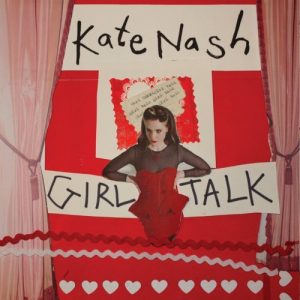
Spider Sounds: Eva Cassidy “Songbird”
Editor’s Note: “Spider Sounds” invites members of the University of Richmond community to share their thoughts about items in the Parsons Music Library’s collection. The links included will take you to the library catalog record for the item in question, or to additional relevant information.
Today’s installment of “Spider Sounds” comes courtesy of Music Library Student worker, Emily (class of 2017) and features a compilation of songs by the late Eva Cassidy. Thanks for contributing to Spider Sounds, Emily!

I picked the album “Songbird,” by Eva Cassidy. This is one of my favorite albums, because it
can find its way into almost any occasion, and makes you smile–and sometimes makes you cry. My mom would always listen to it in the car, and I’ve found it complements studying and cooking time, or can be a good refuge if you are stressed and need to zone out.
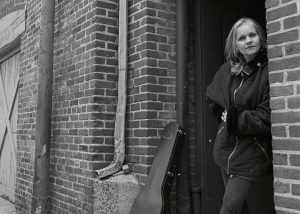
Rather meditative and nostalgic, the tone set by the album is reflective of its publication. It was compiled two years after Cassidy’s death, in her memory. Many of the songs are from live concerts, and her introductions have been maintained, to give the listener not only a feel for the song they are about to hear, but for the character and spirit of the singer. Many of the numbers are recognizable, others more obscure, but for all, the experience will pull at a listener’s heart.
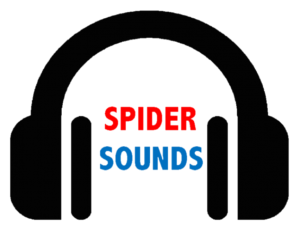
Spider Sounds: Bon Iver
Editor’s Note: “Spider Sounds” invites members of the University of Richmond community to share their thoughts about items in the Parsons Music Library’s collection. The links included will take you to the library catalog record for the item in question, or to additional relevant information.
Today’s installment of “Spider Sounds” comes courtesy of Music Library Student worker, Liza (class of 2017) and features indie folk band Bon Iver’s second album, “Bon Iver, Bon Iver”. Thanks for contributing to Spider Sounds, Liza!
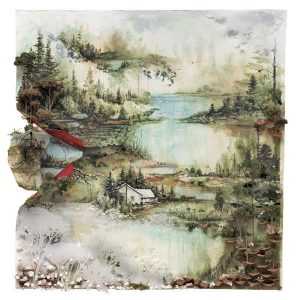
If you haven’t heard of Bon Iver before, you can already get a feeling of their music with a glimpse at this album’s cover artwork.
Bon Iver is an American indie folk band founded by the singer-songwriter Justin Vernon, who won the 2012 Grammy Award for Best New Artist and Best New Alternative Music Album for Bon Iver, Bon Iver.

A promotional photo of Bon Iver frontman Justin Veron taken around the time the album was released.
Differentiating himself from the typical sounds of “folk,” Vernon combined chamber pop with an edge to create his own sounds from scratch. His soulful voice remains a unique characteristic that no other singer sounds like; he evokes an earthy virtuosic voice that you can easily get lost in when listening to his lyrics.
The album is composed of 10 songs, each representing a place. In particular, “Holocene,” is one of my favorite songs on the album because of its ability to trigger dozens of emotions within seconds. I would recommend listening to Bon Iver when you’re in a “chill” and relaxed mood or even when you’re studying, so come by the Parsons Music Library to check it out!

Spider Sounds: Florence + the Machine “Lungs”
Editor’s Note: “Spider Sounds” invites members of the University of Richmond community to share their thoughts about items in the Parsons Music Library’s collection. The links included will take you to the library catalog record for the item in question, or to additional relevant information.
Today’s installment of “Spider Sounds” comes courtesy of Music Library Student worker, Claire (class of 2020) and features “Lungs” the 2009 studio album debut of English indie rock group Florence + The Machine. Thanks for contributing to Spider Sounds, Claire!

I can still remember the stormy, humid night I spent sitting up on a hill in Grant Park, watching Florence whirl across the stage. At Chicago’s largest music festival, I had spent the entire day listening to dozens of bands, eating gooey, cheesy Chicago-style pizza, and wondering if life could get any better. But let’s face it– standing in lines, dancing like a maniac, and jamming out to live music takes a lot out of a person, and by the nighttime, I was exhausted. For days, I had been anxiously awaiting Florence + The Machine, and now, as I plopped down to watch the last show of Lollapalooza 2015, I just couldn’t wait any longer.
I guess the biggest reason why I love this album is the way it takes me back to that night… Florence + The Machine has always been one of my favorites, and getting to see them in concert was a night I will never forget.

Florence Welch of Florence + the Machine mid song
There is something about the way their songs make me want to move that I have yet to find in any other band. Even in songs that were never played on the radio, like “Between Two Lungs,” there is a unique force (especially during the chorus) that somehow encourages me to get up and dance, whether I’m at home, with friends, or even alone in my room.
This album is perfect for anyone who needs to add a little smile to their day–it never fails to cheer me up. I hope you find your own slice of happiness in it, too.

New CDs added in September!
New CDs for September 2016
Pop/Rock/R&B
Beyonce – Lemonade
Bratmobile – Pottymouth
Pink Floyd – The Wall

The Runaways – The Best of the Runaways
Screaming Females – Castle Talk
Siouxsie and the Banshees – The Best of Siouxsie and the Banshees
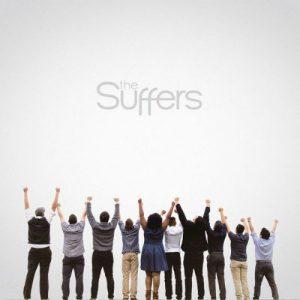
The Suffers – The Suffers
Team Dresch – Personal Best
X-Ray Spex – Germfree Adolescents
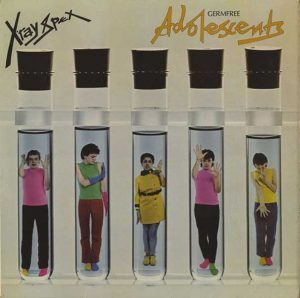
Opera
Benjamin Britten- Billy Budd

Avant Garde
John Cage and Sun Ra – John Cage Meets Sun Ra: The Complete Concert, June 8, 1986, Coney Island, NY
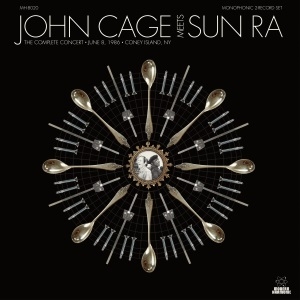
Spider Sounds: Brian Eno “The Shutov Assembly”
Editor’s Note: “Spider Sounds” invites members of the University of Richmond community to share their thoughts about items in the Parsons Music Library’s collection. The links included will take you to the library catalog record for the item in question, or to additional relevant information.
Today’s installment of “Spider Sounds” comes courtesy of Music Library Student worker, Aly (class of 2018) and features “The Shutov Assembly” a 1992 ambient album by English musician, composer & visual artist Brian Eno. Fun Fact: The Shutov Assembly album was dedicated to Russian painter Sergei Shutov. Thanks for contributing to Spider Sounds, Aly!

If you are looking for some chill, ambient studying music, or just looking for a break from your usual go-to playlist, look no further than Brian Eno’s The Shutov Assembly.

Eno is one of the pioneers of electronic and rock music production, and his style varies greatly from album to album. The Shutov Assembly, an electronic album, is ambient, dynamic, and deeply calming, making it perfect for some hardcore studying or just relaxing.
You’ve almost certainly heard Eno’s music before. His music is featured on soundtracks of some very popular works, like Criminal Minds, The Perks of Being a Wallflower, American Horror Story, and even Netflix’s Stranger Things!
Eno is commonly regarded as one of the best musicians in his genre, and for good reason. His vastly diverse works will appeal to anyone, even those with the pickiest of music tastes.

Spider Sounds: Corinne Bailey Rae
Editor’s Note: “Spider Sounds” invites members of the University of Richmond community to share their thoughts about items in the Parsons Music Library’s collection. The links included will take you to the library catalog record for the item in question, or to additional relevant information.
Today’s installment of “Spider Sounds” comes courtesy of Music Library Student worker, Mary (class of 2018) and features the 2006 self-titled debut album of British soul songstress Corinne Bailey Rae. Thanks for contributing to Spider Sounds, Mary!
Corinne Bailey Rae
by
Corinne Bailey Rae
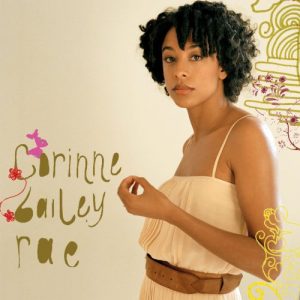
I picked this album because I am a big fan of Corinne Bailey Rae’s music.
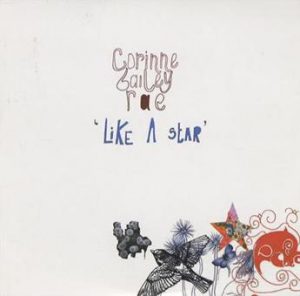
2005 UK CD single cover for “Like A Star”
The first track called “Like A Star” is considered one of her biggest hits was first released as a single in 2005 and was so popular that it was re-released on her self-titled debut album. This song is generally considered a combination of soul, jazz and downtempo. The laid-back smooth tempo matched with Rae’s soulful voice and the sweet lyrics entirely written by her makes it one of my favorites to listen to on a summer night while driving.

2006 CD single cover for “Put Your Records On”
The third track “Put Your Records On” is also another favorite of mine. It has a relatively faster tempo and a brighter feel compared to “Like A Star,” but still has the Rae’s soulful voice matched with precious lyrics that almost sound like she is talking directly to you as a close friend or a sister. As a young woman, I feel very encouraged and relieved by her sister-like tone of the lyrics in this song as she includes many phrases like “don’t need to worry” and “you’re gonna find yourself somewhere, somehow” along with positive and peaceful images of “three little birds” sitting on her window and summer coming like sweet cinnamon with her favorite music in the background. If you have had a long week and need some music to help you relax, put this song on and it will surely brighten up your day.

Spider Sounds: “Louis Armstrong: Master of Modernism”
Editor’s Note: “Spider Sounds” invites members of the University of Richmond community to share their thoughts about items in the Parsons Music Library’s collection. The links included will take you to the library catalog record for the item in question, or to additional relevant information.
Today’s installment of “Spider Sounds” comes courtesy of UR Music Department faculty member Dr. Gene Anderson. Dr. Anderson is the author of a number of articles about early jazz and the analysis of wind music. He has been kind enough to share a review of a recent biography about Louis Armstrong’s early career entitled Louis Armstrong: Master of Modernism. Thanks, Gene!
Louis Armstrong: Master of Modernism
by Thomas David Brothers
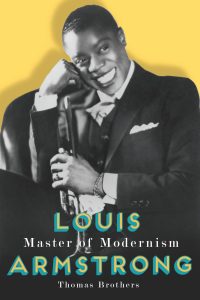
Louis Armstrong: Master of Modernism. By Thomas Brothers. New York, NY: W. W. Norton & Co., 2014.
It is difficult to imagine what more there is to know about Louis Armstrong. WorldCat lists over 9,000 works about the musician in over 17,000 publications scattered among libraries throughout the world. Besides two published autobiographies and dozens of unpublished autobiographical writings, Armstrong’s life has been recounted in a host of personal interviews, recollections by contemporaries and published biographies. Of the latter, Thomas Brothers’ Louis Armstrong: Master of Modernism is the most recent, winning the 2014 Irving Lowens Book Award from the Society for American Music and becoming a finalist for the 2015 Pulitzer Prize in Biography. Master of Modernism is the third Armstrong-related book by Brothers, a Professor of Musicology at Duke University, preceded by an edited selection of Armstrong’s unpublished writings, Louis Armstrong, In His Own Words (1999), and Louis Armstrong’s New Orleans (2006), of which this volume serves as a sequel.
The main thesis of Master of Modernism, which focuses on the period between Armstrong’s departure from New Orleans to join King Oliver’s Creole Band in 1922 to his successful transition into the swing era in the early 1930s, is that the trumpeter’s success “depended on his ability to skillfully negotiate the musical and social legacies of slavery,” and whose career, “can be understood as a response to these interlocking trajectories.” The fulfillment of such a thesis demands nothing short of a cultural history of the period, which Brothers eloquently and compellingly provides. Although the author contributes few new revelations to Armstrong’s well-known life story, he furnishes the most coherent narrative of these years to date by adding details and filling in chronological gaps by means of little-known archival photographs, first-person recollections from contemporaries and primary sources like black newspapers and periodicals.
Armstrong, armed with an exceptional ear, extraordinary memory and a nascent ability to read music, left his hometown with a thorough grounding in black vernacular music—its blues-infused aspects of collective improvisation, freak and obbligato playing (“playing second”) having been fostered variously by plantation music, the heterophonic singing of the Sanctified Church, King Oliver’s “monkeyshines” or “ragging the tune” to Manuel Perez’ leads, and the hawking of wares by street vendors, Lorenzo and Santiago. Most importantly, he was immersed in what Brothers calls the “fixed and variable model” of performance which “became the key ingredient in Armstrong’s mature style.”
Brothers concludes his investigation by summarizing the characteristics that made Armstrong a great melodist. The author’s stances on a few controversial issues have been addressed by others, but this exquisitely written and exhaustively researched work stands as an invaluable addition to the literature and will very likely come to be regarded, with its companion, Louis Armstrong in New Orleans, as the definitive study of Armstrong’s early career.

Spider Sounds: “The History of Rock ‘N’ Roll”
Editor’s Note: “Spider Sounds” invites members of the University of Richmond community to share their thoughts about CDs and other items in the Parsons Music Library’s collection. The links included will take you to the library catalog record for the item in question, or to additional relevant information.
Today’s installment of “Spider Sounds” comes courtesy of UR Music Department faculty member Joanna Love, Ph.D., who is on sabbatical currently but was kind enough to share her thoughts on a 5 disc set of DVDs entitled “The History of Rock ‘n’ Roll.” This multi-part documentary covers rock history from its beginnings in the 1950s to Lollapalooza in the 1990s and features interviews, classic footage and concert performances. Thanks, Joanna!
Time Life Video
The History of Rock ‘n’ Roll

I really like the Time Life History of Rock n Roll DVD collection.
It provides insightful (and entertaining) primary and secondary source interviews that situate American musical styles popular in the latter half of the 20th century within American culture, the music industry, and technological innovations.
It’s particularly interesting that you get to see the artists and producers themselves reflecting on their music.
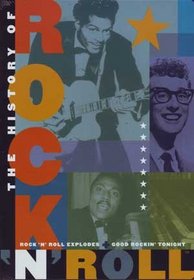
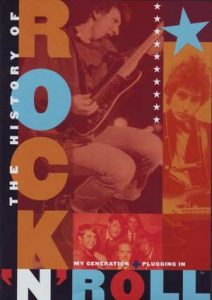
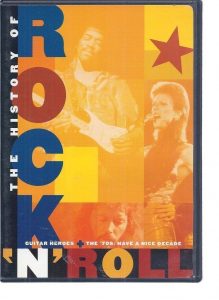

New CDs added in June!
New CDs for June 2016
Classical
Yizhak Schotten – The Elegant Viola
George Szell & The Cleveland Orchestra – Szell Conducts Mozart
UMass Wind Ensemble – Fatastique: Premieres for Trumpet and Wind Ensemble
Band Music
The President’s Own U.S. Marine Band – Flourishes and Meditations
The President’s Own U.S. Marine Band – Be Glad Then, America
Jazz
Duke Ellington- The Nutcracker Suite
Vocal Music
Teresa Stratas – The Unknown Kurt Weill



